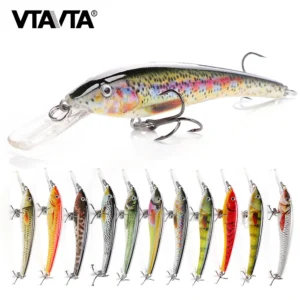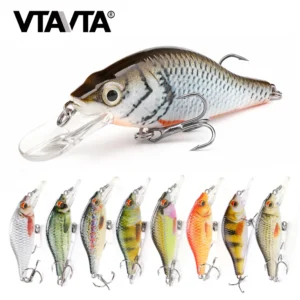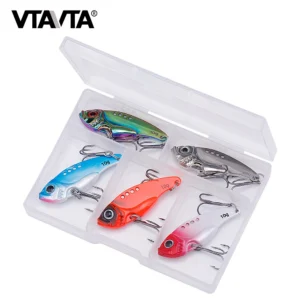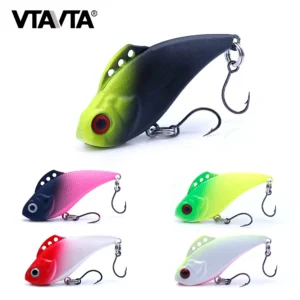Reel in Wellness: 7 Physical Fitness Benefits of Regular Fishing Trips
Reel in Wellness with regular fishing trips! Discover 7 compelling physical fitness benefits of casting your line, from boosting cardiovascular health to improving balance and strength. Dive into this comprehensive guide and see why every angler’s secret weapon for staying fit is closer than you think.
Introduction
There’s something undeniably magnetic about the gentle tug at the end of your line, the scent of freshwater in the morning air, and the promise of a prized catch glinting beneath the surface. Beyond the thrill of landing the “big one,” fishing offers a treasure trove of physical health benefits—many of which anglers never pause to appreciate. While most of us head out to lakes, rivers, and coastal waters for relaxation, connection with nature, or the camaraderie of fellow fishing enthusiasts, our bodies are quietly reaping rewards the moment we step onto the dock or wade into the shallows.
In an age where gym memberships and fitness classes dominate the conversation around staying healthy, it’s time to shine a spotlight on an age-old pastime that doubles as a dynamic, full-body workout. Whether you’re hiking to a remote trout stream, standing knee-deep in a river’s current, or battling a trophy bass from a small boat, every aspect of a fishing trip engages muscles, elevates heart rate, and challenges coordination. Best of all, fishing is low-impact, mentally restorative, and—perhaps most importantly—fun.
Over the next several sections, we’ll explore seven physical fitness benefits of regular fishing trips, providing you with compelling reasons to cast off more often. From cardiovascular improvements to enhanced motor skills, read on to learn how your next angling adventure can be a game-changer for overall wellness.
1. Boosted Cardiovascular Health
How Fishing Elevates Your Heart Rate
Fishing is far from a sedentary hobby. Even a peaceful day on the water involves continuous movement—hiking to the fishing spot, wading through streams, maneuvering your boat, and making repeated casts. These activities collectively keep your heart rate elevated in the moderate-intensity zone, improving circulation and enhancing cardiovascular endurance over time.
Hiking & Paddling: Reaching remote fishing spots often involves hiking over uneven terrain or paddling a canoe/kayak. Both activities engage large muscle groups in your legs, back, and arms, effectively raising your heart rate and burning calories.
Casting & Retrieving: A powerful overhead or sidearm cast requires explosive effort from your shoulders, arms, and core. Retrieving the line—especially when feeling resistance—can feel like a mini rowing workout that strengthens your upper body.
Boat Maneuvering: Whether you’re guiding a drift boat through rapids or positioning a bass boat for the perfect cast, you’re engaging in repetitive muscle contractions that keep blood pumping and lungs working.
Long-Term Cardiovascular Benefits
Regular moderate aerobic activity reduces risk factors for heart disease, high blood pressure, and stroke. By planning fishing outings just 2–3 times per week, you can achieve the 150 minutes of moderate-intensity exercise recommended by the American Heart Association, all while having the time of your life.
How Fishing Elevates Your Heart Rate
Fishing is far from a sedentary hobby. Even a peaceful day on the water involves continuous movement—hiking to the fishing spot, wading through streams, maneuvering your boat, and making repeated casts. These activities collectively keep your heart rate elevated in the moderate-intensity zone, improving circulation and enhancing cardiovascular endurance over time.
Hiking & Paddling: Reaching remote fishing spots often involves hiking over uneven terrain or paddling a canoe/kayak. Both activities engage large muscle groups in your legs, back, and arms, effectively raising your heart rate and burning calories.
Casting & Retrieving: A powerful overhead or sidearm cast requires explosive effort from your shoulders, arms, and core. Retrieving the line—especially when feeling resistance—can feel like a mini rowing workout that strengthens your upper body.
Boat Maneuvering: Whether you’re guiding a drift boat through rapids or positioning a bass boat for the perfect cast, you’re engaging in repetitive muscle contractions that keep blood pumping and lungs working.
Long-Term Cardiovascular Benefits
Regular moderate aerobic activity reduces risk factors for heart disease, high blood pressure, and stroke. By planning fishing outings just 2–3 times per week, you can achieve the 150 minutes of moderate-intensity exercise recommended by the American Heart Association, all while having the time of your life.
2. Strengthened Muscles & Endurance
Casting, Reeling, & More
A successful fishing trip demands more than patience—it requires strength. From casting rods that put up stiff resistance to hauling hefty coolers full of gear, your muscles are in for a workout.
Upper Body Engagement: Each cast is an exercise in shoulder, arm, and back strength. Fighting a fish uses your biceps, triceps, and forearm muscles to maintain tension, while your deltoids and trapezius stabilize the rod.
Core Activation: Balancing on a boat deck or shifting weight during a cast ignites your core muscles—abdominals, obliques, and lower back—to maintain stability.
Lower Body Work: Wading through water or hiking to a remote fishing hole engages quadriceps, hamstrings, calves, and glutes. Even standing for hours on end provides an isometric workout for your legs.
Building Muscular Endurance
The repetitive nature of fishing motions—casting, retrieving, netting—builds muscular endurance over time. As your muscles adapt, you’ll notice you can cast farther, fight heavier fish, and hike longer distances without fatigue.
3. Enhanced Flexibility & Balance
Wading, Climbing, & Casting
Fishing environments are rarely flat or predictable. You may find yourself straddling rocks, climbing trails, or stretching for that perfect cast. Navigating these conditions naturally improves flexibility and balance.
Dynamic Stretches: Reaching overhead for a high-back cast or bending to grip tangled line encourages shoulder and spine mobility.
Single-Leg Balance: Wading in shifting currents forces you to engage stabilizer muscles around the ankles and knees, honing proprioception (your body’s awareness of its position).
Core & Hip Flexibility: Twisting your torso for distance casts or crouching to net fish opens up hip flexors and increases rotational mobility.
Why Balance Matters
Improved balance reduces the risk of slips, trips, and falls—critical when you’re on wet rocks, slippery boat decks, or uneven trails. A stable foundation also translates to better performance in everyday life, from carrying groceries to maintaining proper posture at your desk.
4. Low-Impact Workout for Joint Health
Protecting Your Knees, Hips, & Shoulders
Unlike high-impact activities such as running or high-intensity interval training, fishing’s movements are gentle on joints, making it an excellent option for individuals of all ages and fitness levels.
Smooth Casting Motions: Casting rods involve fluid movements that strengthen joints without jarring impact.
Standing/Walking Alternatives: If you prefer, you can sit in a comfortable chair on the shore or deck, alternating between standing and sitting to keep joints mobile.
Adjustable Gear: Modern fishing equipment—lightweight rods, ergonomic reels, and padded waders—minimizes strain on joints during prolonged use.
Long-Term Joint Benefits
Low-impact activity helps maintain cartilage health, reduces stiffness, and can alleviate symptoms of mild osteoarthritis. Regular fishing supports synovial fluid circulation, which lubricates joints and keeps them feeling supple.
5. Core Stability & Postural Improvement
Casting Posture & Boat Balance
A sturdy core is the foundation for all athletic movements, including fishing. Whether you’re casting from shore or stabilizing your stance on a rocking boat, engaging your core is non-negotiable.
Isometric Holds: Standing steady in a current or adjusting your center of gravity on a boat demands continuous core engagement.
Rotational Strength: The twisting motion of casting recruits obliques and transverse abdominis, enhancing rotational power that’s beneficial in many sports.
Postural Correction: Maintaining an upright posture during long days on the water combats the slouch often associated with desk work, helping to realign shoulders and spine.
Carryover to Daily Life
A strong core alleviates back pain, supports healthy posture, and improves performance in other activities—whether lifting objects, performing household chores, or engaging in other sports.
6. Calorie Burn & Weight Management
Turning Fishing Into a Fat-Burning Session
It’s easy to underestimate the calories expended during a fishing trip. Studies show that light fishing activities can burn approximately 200–300 calories per hour, while more vigorous outings (wading, rowing, or battling trophy fish) can torch 400–600 calories per hour.
Duration Matters: Long, leisurely days give you plenty of time to accumulate calorie burn—just two 4-hour trips can rival the calorie expenditure of a gym session.
Gear Weight: Carrying gear—tackle boxes, rods, coolers—adds resistance that your body must overcome, increasing energy expenditure.
Environmental Factors: Wading through cold water forces your body to work harder to maintain core temperature, slightly boosting metabolism.
Creating a Sustainable Routine
By integrating fishing into your weekly schedule, you create an enjoyable, sustainable approach to weight management—far more enticing than forcing yourself through treadmill miles.
7. Improved Hand-Eye Coordination & Fine Motor Skills
Precision Casting & Tackle Manipulation
Landing a fish requires precision—from threading line through tiny rod guides to tying intricate knots. These fine motor activities sharpen hand-eye coordination and dexterity.
Knot-Tying Mastery: Learning and practicing various knots (e.g., Palomar, Uni, Clinch) refines finger strength and coordination.
Bait Presentation: Pinning worms on hooks or crafting artificial lures demands careful manipulation and steady hands.
Strike Timing: Reacting instantly to subtle line movements trains neural pathways involved in reflexes and reaction speed.
Cognitive Benefits of Coordination
Sharpened coordination translates beyond fishing—it supports daily tasks like typing, crafting, or playing musical instruments. Neurologically, these activities stimulate brain regions responsible for planning and executing precise movements.
Bringing It All Together: Crafting Your Fishing-Fitness Plan
Now that you’re acquainted with the seven physical fitness benefits of regular fishing trips, let’s discuss how to optimize your angling adventures for maximum wellness returns:
Plan Consistency: Schedule fishing outings at least twice a week—shorter sessions count!
Gear for Movement: Choose lightweight rods and reels, supportive footwear, and adjustable waders to encourage active engagement.
Mix It Up: Alternate between shore fishing, wading, kayak angling, and boat trips to vary the muscle groups you target.
Set Goals: Challenge yourself with distance-casting goals, longer hikes to remote spots, or learning new lure techniques.
Track Progress: Use fitness trackers or simple logs to monitor time spent, distance covered, and estimated calories burned.
Conclusion & Call to Action
Fishing isn’t just a pastime—it’s a gateway to holistic wellness. From cardiovascular gains and muscle strengthening to flexibility improvements, joint-friendly motions, core stabilization, calorie torching, and precision skills, every cast brings you closer to peak physical fitness. Best of all, these benefits unfold naturally as you immerse yourself in the tranquility and camaraderie of life on the water.
So grab your rod, pack your tackle box, and chart a course for your nearest fishing spot. Your next catch could be more than just dinner—it might be the healthier, stronger you you’ve been reeling in all along. Tight lines and happy fishing!






